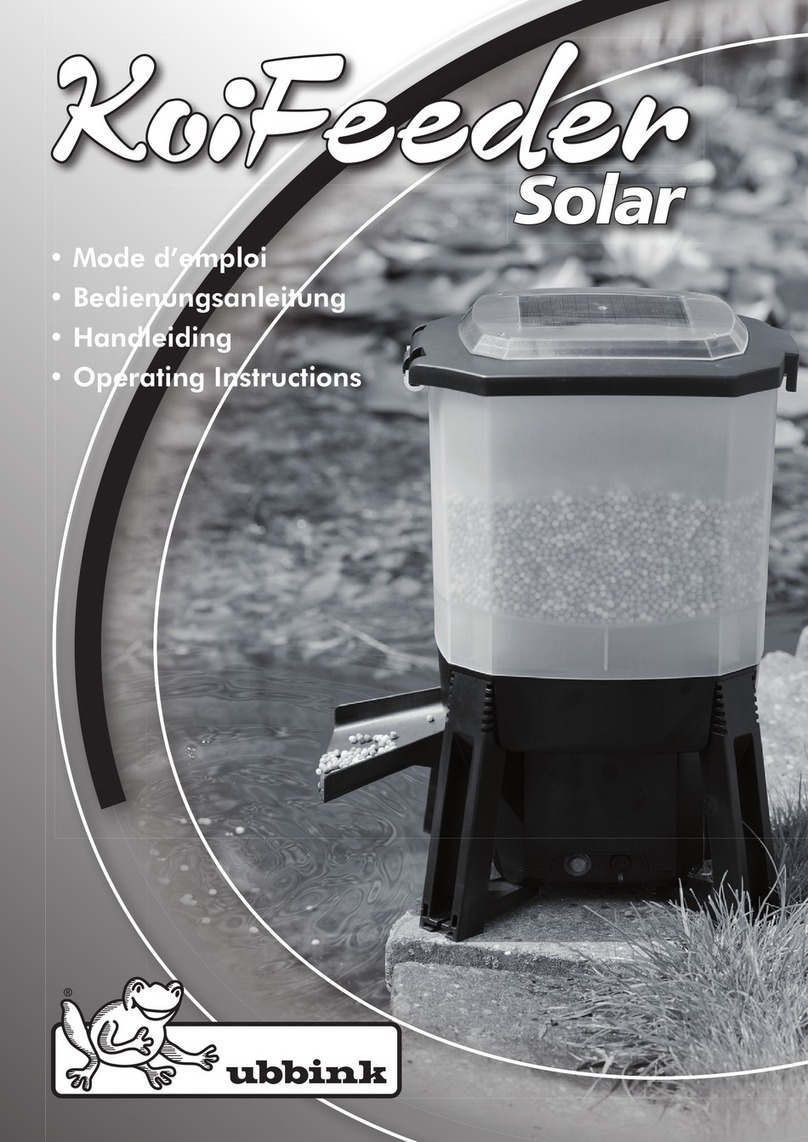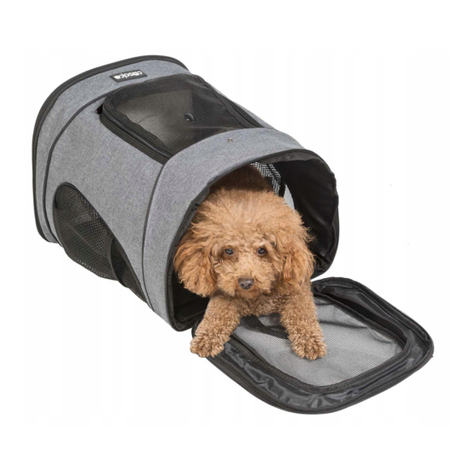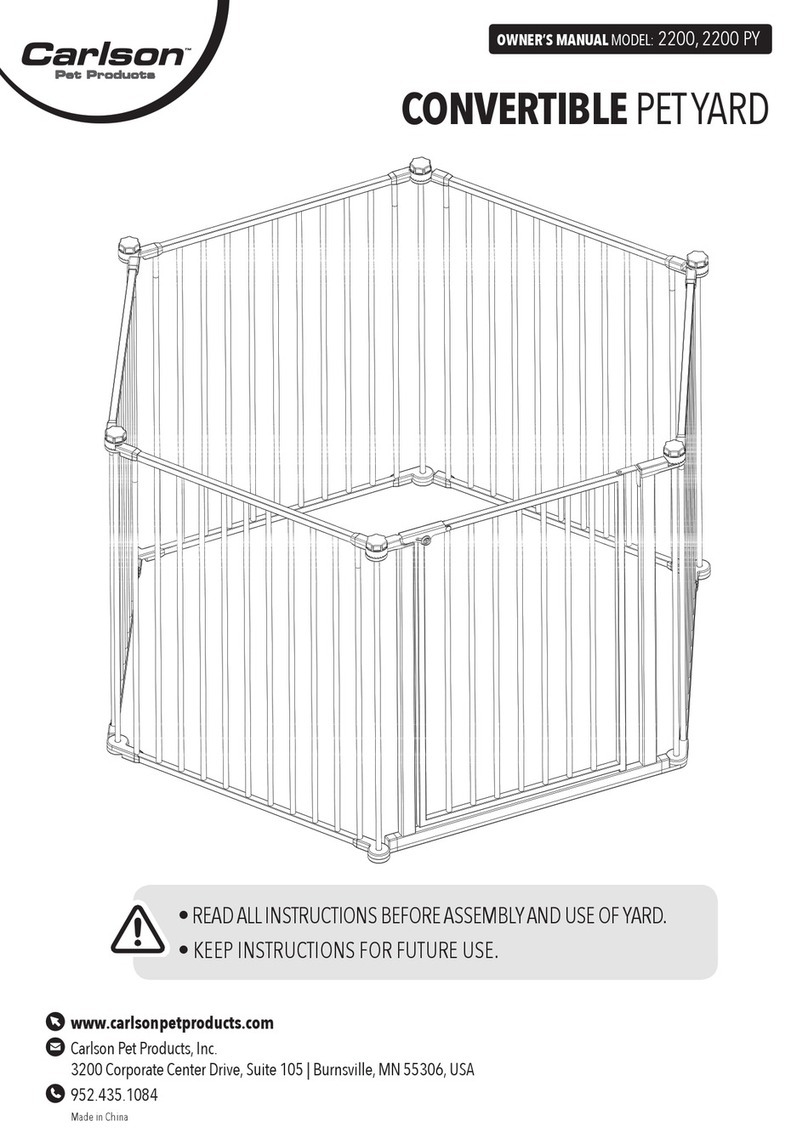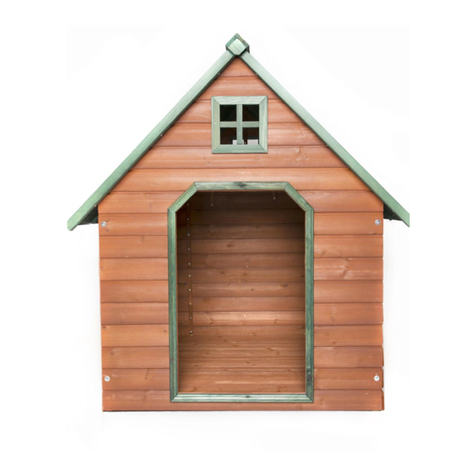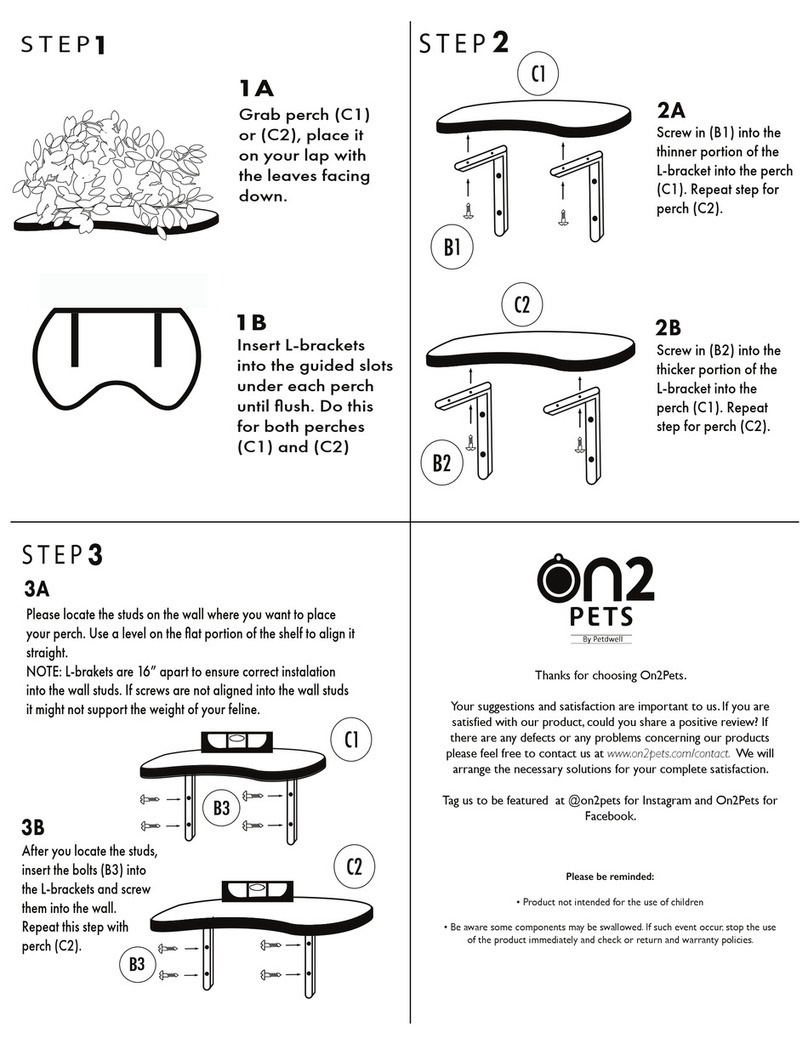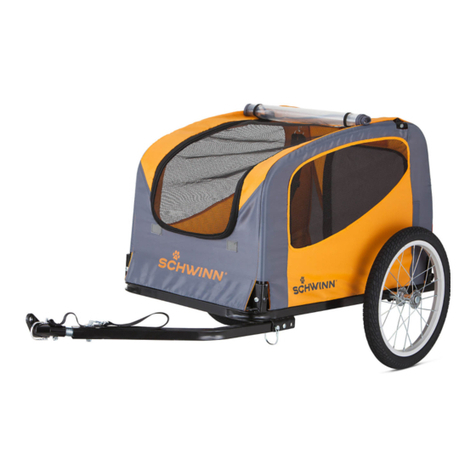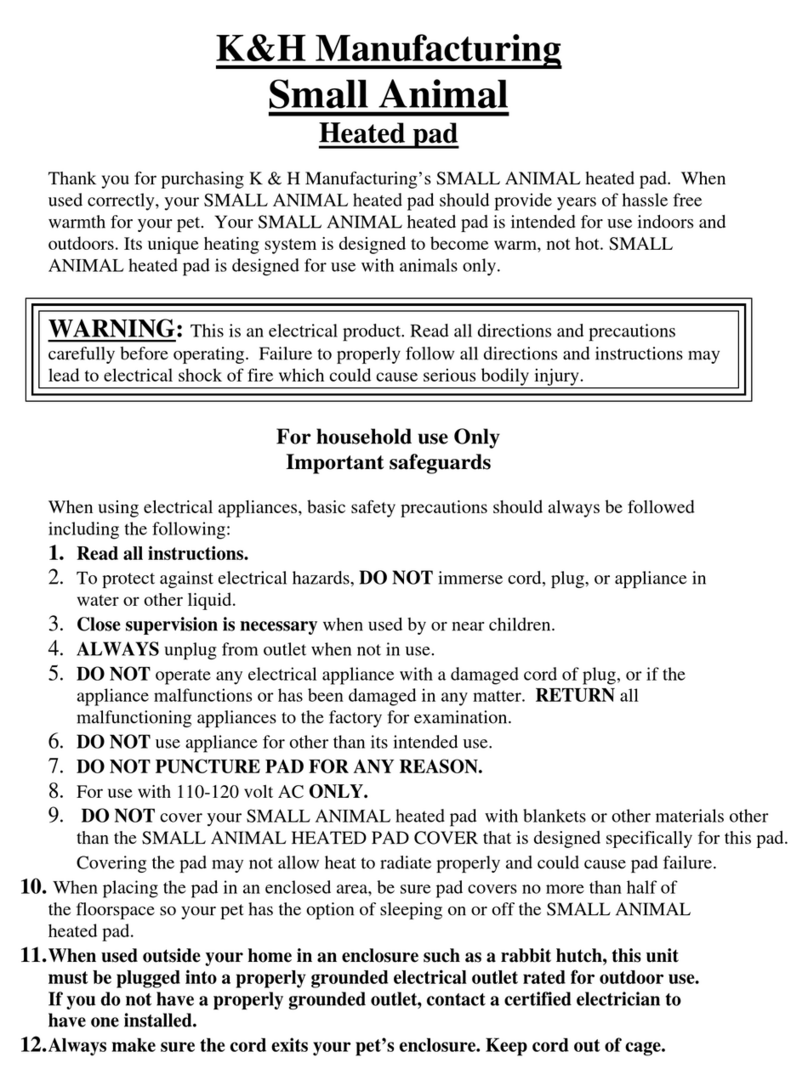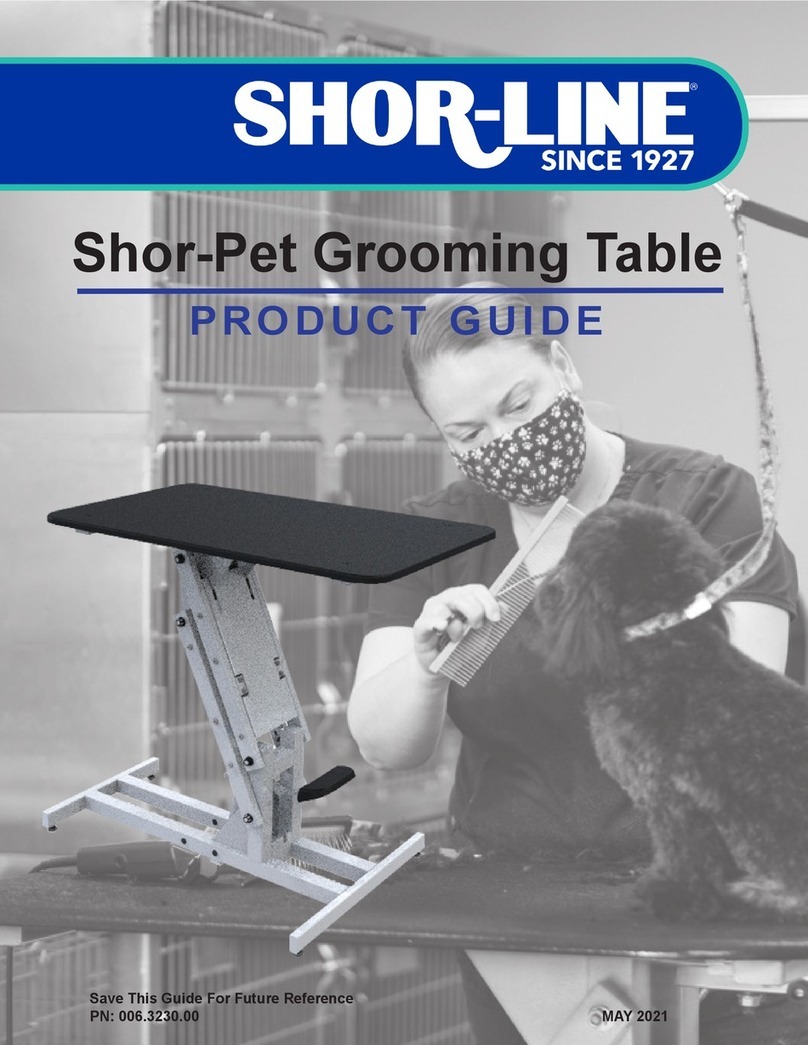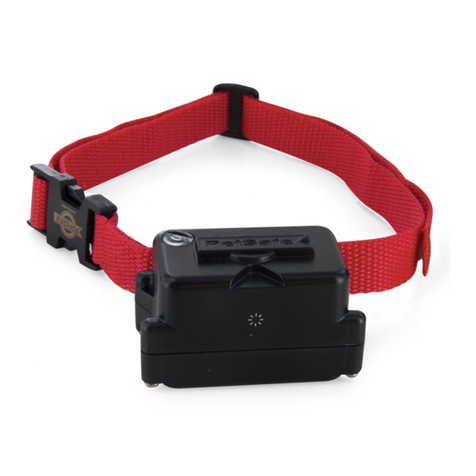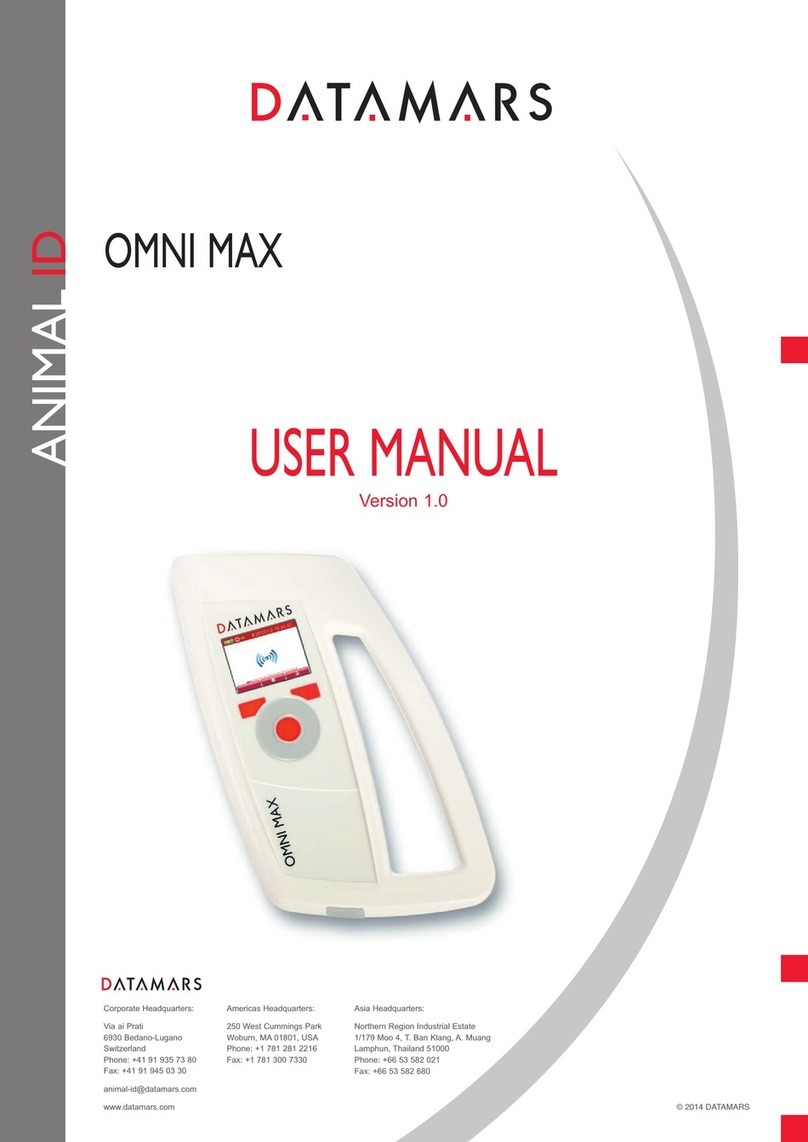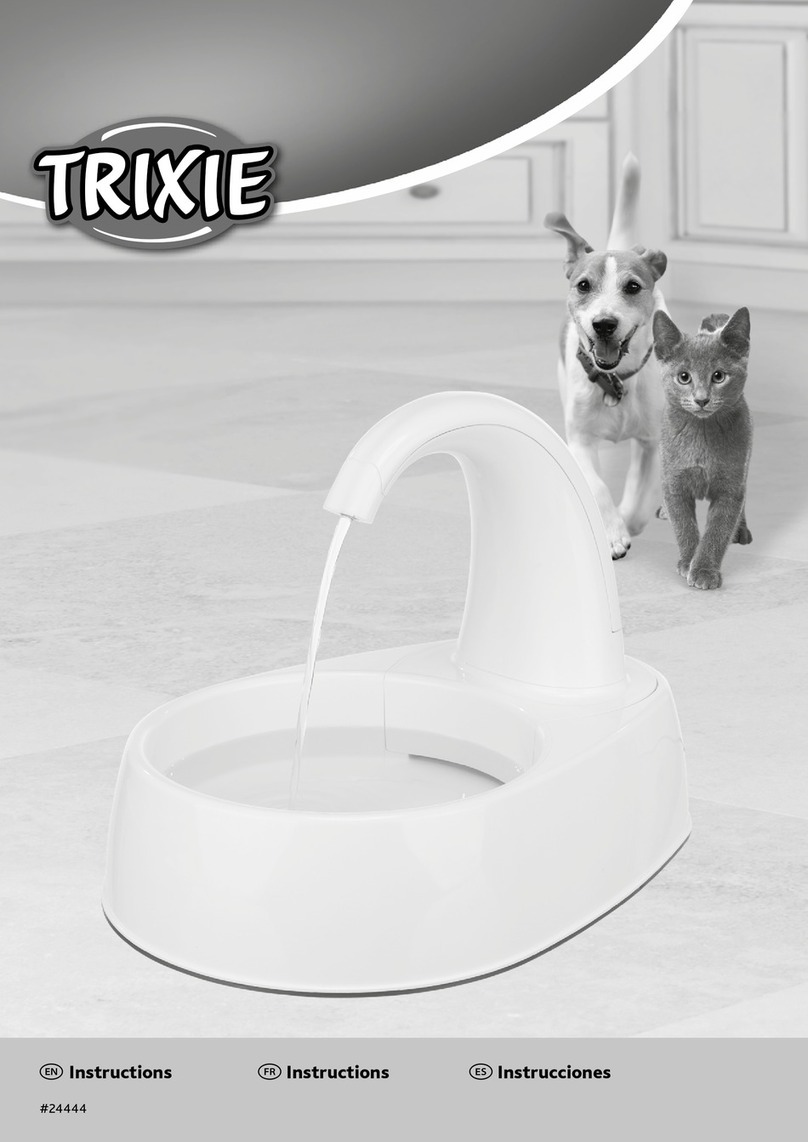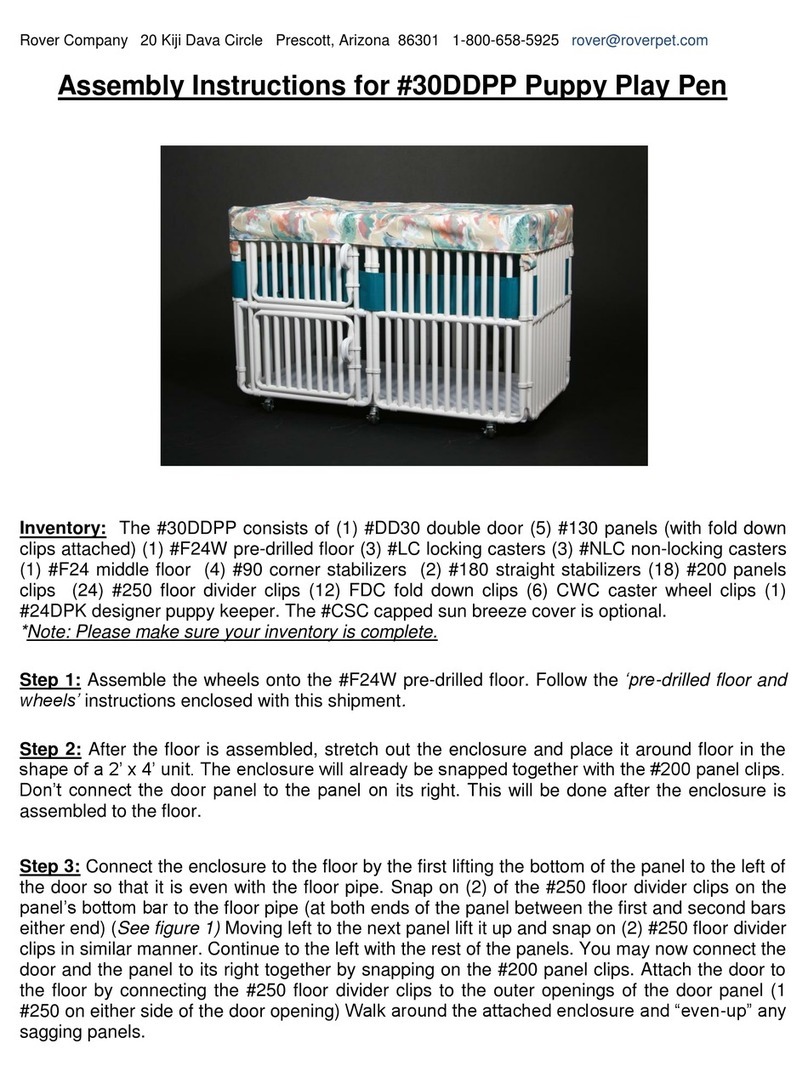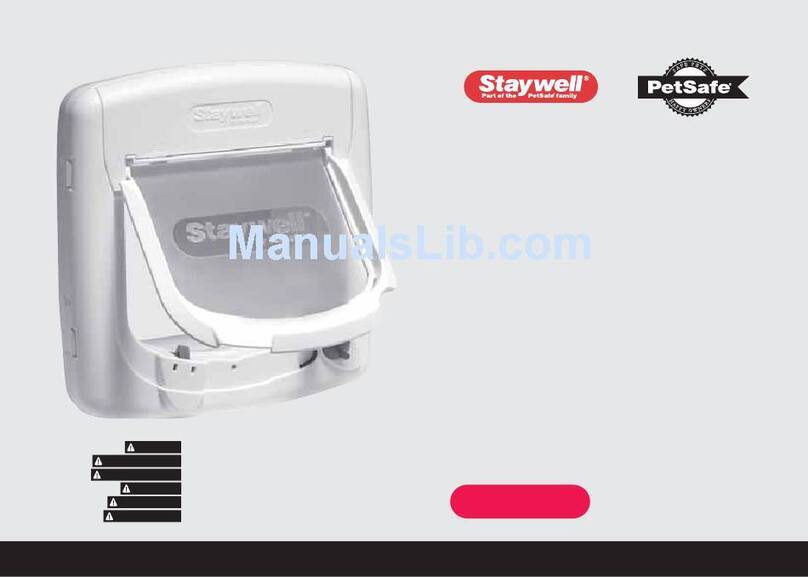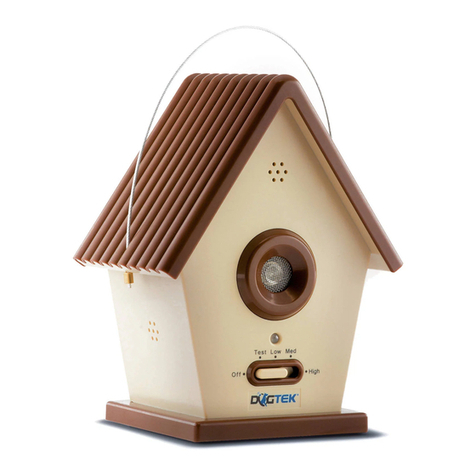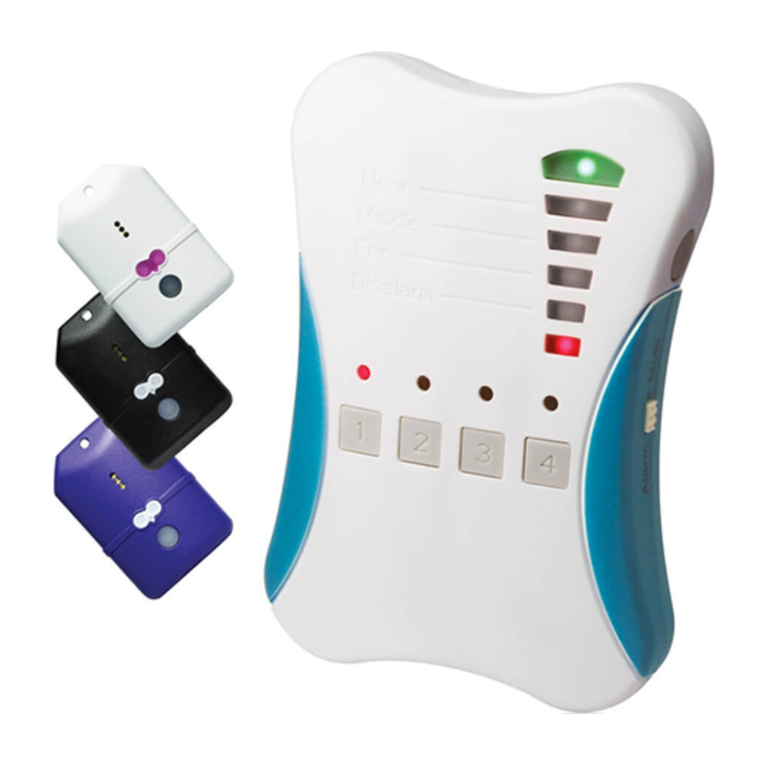
1110 ENEN
Your dog box package contains
1x dog box of your choice
1x foot pump
1x repair set (adhesive is not included in delivery – a standard
PVC adhesive is recommended)
2x short straps with hooks
2x long straps with hooks
1x protective sheet for the opening edge
1x safety stabilisation bar (already built in)
Your dog box is made of phthalate-free (non-toxic) PVC.
Nevertheless, before using it for the rst time, you should
air it thoroughly in an inated state.
ASSEMBLY
• Open the hooks, unfold the box (Fig. 1) and take out the
foot pump.
• The stabilisation bar must be pushed all the way into the
end locking piece (Fig. 2).
• Open the cap of the valve. Press and turn the knob so that
the inner pin of the valve is on top (Fig. 3).
• Next attach the pump to the valve and screw it on tightly
in a clockwise direction (Fig. 4). Now you can pump up the
box (Fig. 5). Go on pumping until it is no longer possible to
press down with your foot.
• Close the cap of the valve so as to prevent any risk of injury
(Fig. 6).
DISASSEMBLY
• Open the valve by pressing the pin inwards and turning it
(Fig. 7). This allows the air to escape from the box.
• Fold both sides of the box inwards, then fold the back of the
box downwards so that the air can escape.
• If desired, you can fold the box lengthways once. Now con-
nect each of the two long straps with one of the short straps
and pass them through the lashing rings on both sides of
the box, as shown in Fig. 8.
Using a small brush, spread the adhesive over the damaged
area inside the tape (Fig. 10) and over the patch (Fig. 11). Remove
the masking tape and stick the patch down over the prepared
area (Fig. 12). To ensure rm adhesion, press the patch to the
surface using a roller or similar object (Fig. 13).
IMPORTANT SAFETY INFORMATION
• When buying the box, make sure it’s the right size for your
dog. It should offer enough room for the dog to be able to
stand, turn comfortably and lie down.
• Only transport your pet in the dog box if it is already used
to the box.
• To avoid any risk of choking, do not put a lead on your dog
when transporting it in the box.
• Leaving pets alone for long periods can result in their beco-
ming frightened and trying to get out of the box by force.
This can lead to injuries.
• Never leave your dog alone in the car in high temperatures.
• Keep the dog box in a sheltered place.
• To inate the dog box, only use the foot pump provided. A
tyre air compressor is not suitable for inating the box.
• Porsche accepts no liability for any damage to the dog box
that may be caused by the dog, e.g. due to aggressive or
poorly trained behaviour.
SAFETY DUE TO DROPSTITCH THREADS
Many thousands of threads stabilise the walls of the dog box
and the air pressure gives it a exibility and elasticity that pro-
tect the dog in the event of braking sharply, extreme bends in
the road or, in the worst case, a collision.
FIXING THE BOX IN THE BOOT
The stable straps allow your dog box
to be securely xed in the boot of your
vehicle. To do this, insert the hooks on
one end of the straps into the lashing
rings on the side of the dog box and
insert the hooks on the other end into
the lashing rings intended for them
in the boot (Fig. right). You will nd
instructions for doing this in the vehicle
instruction manual.
REPAIR SET
Should you discover a damaged area on your dog box from
which air is escaping, you can repair it very easily. First, demarca-
te the damaged area (Fig. 9). Take one of the patches contained
in the repair set and, if necessary, cut it to t the size of the
damaged area. Place the cut-out patch over the damaged area
and draw round it with a pencil. Stick down masking tape along
the pencilled line.
